Top 10 Cyber Threats That SMEs Can't Ignore - Part 2
Top 10 Cyber Threats That SMEs Can't Ignore - Part 2
Join us as we embark on the second part of our exploration into the realm of cyber security! In this instalment, we continue traversing the road of digital defences and delve into the remaining crucial points while simultaneously shedding light on additional cyber threats that demand attention and strategic consideration. Follow along as we navigate the intricacies of these evolving challenges and provide insights for IT professionals and businesses striving to fortify their resilience in the face of an ever-shifting digital landscape.
6. Insider threats
You may not expect it, but the danger may very well be dwelling within your own walls. While organisations frequently concentrate on external threats, neglecting the internal threat landscape is comparable to disregarding a ticking time bomb, the consequences of which can be severe. Whether it's a disgruntled employee or a well-intentioned yet careless staff member clicking on a phishing link, the swiftness and magnitude at which an insider can cause harm are frequently underestimated, especially when considering their knowledge and access.
Prevention constitutes more than half the battle in mitigating insider threats. Prior to being issued an ID badge, each employee should undergo a comprehensive background check, marking the initial step in fortifying defences. However, this is just the beginning. Stringent access controls must be implemented, guaranteeing that personnel have access solely to the information essential for their respective roles. Even within the trusted circle, the principle of least privilege should prevail, with access carefully allocated and routinely reviewed. This ensures that as roles evolve, access permissions are adjusted accordingly.
Vigilance persists beyond the point of hiring or granting access. Continuous monitoring stands as a ally in identifying and neutralizing insider threats. Routine audits of data access and system activity serve as early warning systems, flagging potential issues long before they escalate into major breaches. Whether implemented in-house or through third-party tools, monitoring systems can alert you to unusual data access patterns or system usage, allowing you to address potential concerns before they develop into crises. In the event of an anomaly, having an incident response team ready ensures immediate investigation and corrective measures to thwart any malicious activities.
7. Password Attacks
Passwords frequently serve as the initial line of defence but can also become the weakest link if not handled properly. Whether it's an easily guessable 'password123' or the ubiquitous 'qwerty,' weak passwords are akin to leaving your front door unlocked in a crime-ridden neighbourhood. In the realm of cyber threats, brute-force or dictionary attacks don't necessitate sophisticated methods for cybercriminals to gain unauthorized access to your systems. These attacks inundate the system with a multitude of potential password combinations until one successfully works, and the alarming reality is how frequently they achieve success.
Even with strong, complex passwords in place, you'd undermine your efforts if you resort to jotting them down on a sticky note or saving them in an unprotected spreadsheet. The perfect password isn't just challenging to guess but also meticulously guarded. Security is as much about maintaining password confidentiality as it is about crafting robust ones. Prioritizing secure password storage and management is equally fundamental to the process of creating a strong password in the first place.
You don't have to tackle password security solo; technology can be a potent ally. Password management tools can generate and securely store complex passwords for you, locking them away under robust encryption. And why limit yourself to just a password? Multi-factor authentication (MFA) introduces an additional layer to your security framework, demanding supplementary information or action for access. This could be something you have (like a phone), something you are (like a fingerprint), or something you know (like a secondary password). By implementing MFA, an extra barrier stands in the way preventing unauthorized users from gaining access, even if your password is compromised.
8. IoT Vulnerabilities
The proliferation of IoT devices, ranging from smart thermostats to connected coffee machines, is becoming ubiquitous. Despite the convenience they bring to our lives, these devices are not always constructed with security as a top priority. Manufacturers often prioritize usability and features over robust security protocols. This inherent lack of built-in security designates IoT devices as low-hanging fruit for cybercriminals. Once compromised, these seemingly innocuous gadgets can transform into Trojan horses, providing attackers with a gateway to infiltrate your larger, more secure network.
It's easy to overlook the fact that your network extends beyond computers and servers. That seemingly harmless smart fridge or the networked printer down the hall might be your Achilles' heel. These devices frequently share the same network as your more secure, mission-critical systems. A vulnerability in a single IoT device can act as a launching pad for cybercriminals to move laterally across your network, potentially compromising more critical systems. This scenario could lead to data breaches or even complete system shutdowns.
To counter the security risks posed by IoT, an antidote lies in strategic measures which begin by segregating your networks, ensuring that your IoT devices operate on a separate network from your primary business operations. Should a case of a compromised device arise, this step could help to mitigate potential damage. Avoid reliance on default settings and create a habit of following up with rigorous security protocols, including the establishment and regular update of strong, unique passwords for each device. You can also stay proactive by staying ahead of firmware updates and security patches. While manufacturers occasionally release security updates, it is the businesses’ responsibility to apply them. Regularly monitoring the network for unusual activity serves as an early warning system, enabling timely intervention before significant damage occurs.
9. Social Engineering
In the realm of cybersecurity, the spotlight often shines on software vulnerabilities, inadvertently sidelining the crucial human aspect. Social engineering underscores this human-centric vulnerability, where the primary attack vector is not a piece of software but rather your own staff. Attackers adeptly exploit common human traits such as trust or fear, manipulating employees into divulging passwords, authorizing wire transfers, or even providing physical access to a building. The techniques employed are as diverse as they are manipulative, encompassing pretexting, baiting, tailgating, and quid pro quo, where attackers may offer something in exchange for sensitive information. It represents the pinnacle of psychological manipulation, and the reality is that everyone is susceptible.
Regrettably, there's no antivirus solution for human gullibility. Even with a state-of-the-art firewall and top-notch encryption tools, the defence might prove futile against an employee manipulated into disclosing their login credentials. Traditional technology-centric security measures often falter in the face of social engineering attacks due to their psychological nature. Relying solely on software-based protection leaves a significant gap in your defence strategy, overlooking a crucial aspect of the battle against cybersecurity threats.
The most potent defence against social engineering is education. Regular training sessions serve to enlighten your staff about the latest social engineering techniques, ensuring they recognize red flags—whether it's an unexpected email requesting confidential information or someone tailgating them into the building. Establish protocols for verifying the identity of anyone soliciting sensitive information. Emphasize the importance of double-checking email addresses, employing two-factor authentication, and advocating for phone verification when in doubt. A simple phone call to confirm the identity of someone seeking access or information can effectively thwart an otherwise successful social engineering attempt.
10. SQL Injection
Finally we have the last point: SQL injection. SQL Injection operates like a wolf in sheep's clothing, entering innocuously through a website's input field but possessing the potential to wreak havoc on your entire database. Exploiting inadequately designed website forms, attackers insert malicious SQL code that the database unwittingly executes. The outcome is profound—they gain the keys to the kingdom, acquiring the ability to manipulate, steal, or even delete your data. These attacks are especially detrimental as they pinpoint the very repository where your most sensitive business and customer information resides.
The repercussions of an SQL Injection attack can be catastrophic. Customer data becomes susceptible to theft, intellectual property may be compromised, and the risk of violating data protection regulations looms large, inviting substantial fines and legal penalties. Not to be overlooked is the significant reputational damage; once customers discover that their data has been compromised due to a security oversight, rebuilding that trust becomes an Everest-like challenge. SQL Injection has far-reaching consequences, impacting not just your technical infrastructure but the entirety of your business model.
In the realm of SQL Injection, prevention proves vastly superior to cure. Employing parameterized queries stands as one of the most effective means to shield your website, ensuring that attackers are unable to manipulate your SQL commands. Additionally, integrating Web Application Firewalls (WAFs) provides an extra layer of defense by actively monitoring and filtering out malicious HTTP requests. Complementing these measures, regular security audits play a crucial role in identifying vulnerabilities before they become exploitable. Elevate SQL Injection prevention as a pivotal component of your cybersecurity strategy, and you'll take significant strides in fortifying your business against this insidious attack vector.
In conclusion, navigating the intricate landscape of cybersecurity demands a comprehensive approach that extends beyond traditional perimeters. From the potent threats posed by social engineering exploits targeting human vulnerabilities to the silent dangers of IoT devices infiltrating networks, understanding and fortifying against these diverse challenges is paramount. By embracing continuous education, leveraging advanced technologies, and adhering to best practices, businesses can forge a resilient defense against the ever-evolving array of cyber threats, safeguarding their assets, reputation, and the trust of their stakeholders.


